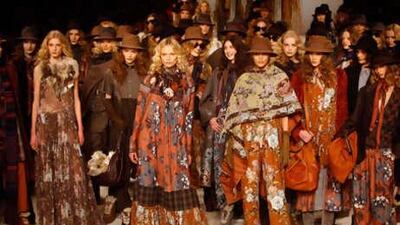Japanese fashion: not a byword for approachable, easy-to-wear or colourful clothes. In fact, you're more likely to imagine the intellectual wanderings of Rei Kawakubo and Yohji Yamamoto, or the pure lines and chemical brights of Dai Fujiwara at Issey Miyake. But for the past 40 years, Kenzo has been ploughing doggedly on, through consumerism and minimalism, grunge and logomania, staying true to the founder Kenzo Takada's vision of artisanal textures, mixed patterns and hues and loose, wearable shapes.
This year, the brand celebrates four decades of a fashion line that is being continued by its current creative director, the Sardinian designer Antonio Marras, with an autumn/winter 2010/11 collection that revisits some of the favourite shapes and design motifs. Takada himself, who opened his first boutique, Jungle Jap, in 1970, after moving from Japan to Paris, is now involved in a variety of projects, after retiring in 1999, having sold the label to LVMH in 1993. His most recent endeavour, an exhibition of self-portraits at Studio 55 in Paris, still speaks of his love of the heavily worked and printed fabrics of Japan - a far cry from the sculptured monochromes that we expect from Japanese design today.
But it is Marras who continues to promote Kenzo's aesthetic, with his pattern-heavy fabrics (the result of a cash-flow crisis that caused Takada to construct his clothes from offcuts and flea-market finds), relaxed shapes that recall the dart-free kimono-inspired shapes of his early collections, and global-traveller accents that are part of the nomadic DNA of the label (the Japanese designer's boat journey from Tokyo to Marseilles in 1964-5 was a life-changing experience).
In a Middle East exclusive, The National was invited behind the scenes at the Kenzo headquarters in Paris where key pieces from the label's archives have been brought out for a private display.

